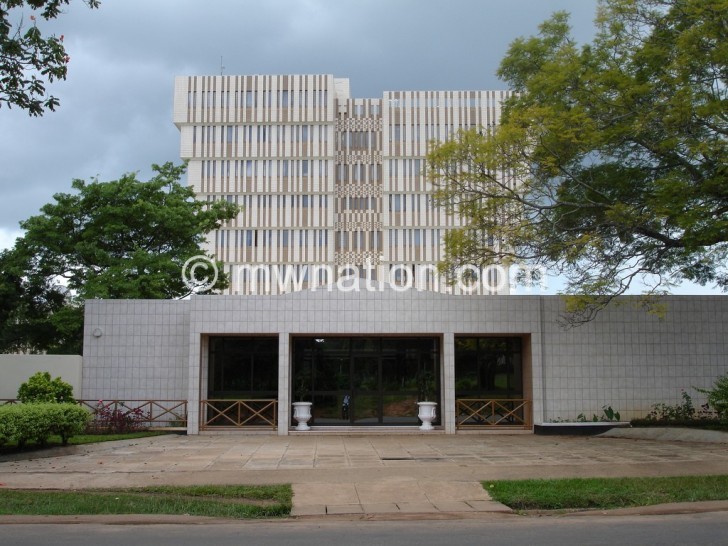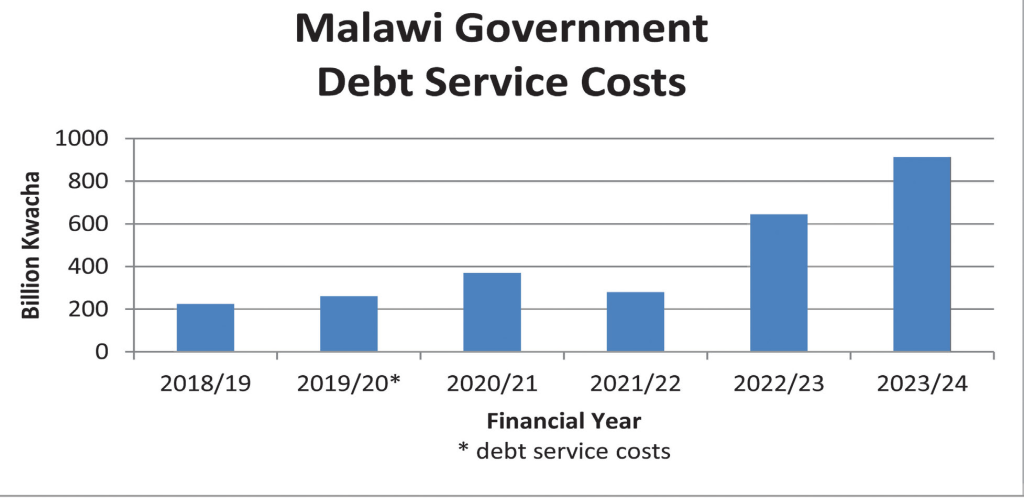The Reserve Bank of Malawi (RBM) says high levels of non-performing loans fuelled by high inflation and interest rates are threatening the country’s lenders in the microfinance sector.
In its Financial Stability Report dated December 2022, the RBM indicated that the microfinance sector recorded an increase in the levels of bad loans in the period under review.
RBM headquarters in Lilongwe where monetary policy decisions are made
Money market analysts say non-performing loans, a sum of borrowed money whose scheduled payments have not been made by the debtor for a period of time, impact on credit supply and demand, reducing lending to the real economy.
RBM data shows that non-performing loans ratio for deposit and non-deposit taking institutions rose from the acceptable benchmark of five percent in June 2022 to 6.6 percent and 6.8 percent, respectively in December 2022.
This rise coincided with the period the RBM devalued the kwacha by 25 percent
Reads the report in part: “Credit risk remained high in the sector due to high levels of non-performing loans as the sector was affected by the adverse effects of devaluation of the kwacha as well as inflation, which negatively affected cost of living and businesses, resulting in default in their obligations.
“Furthermore, as the economy passes through the lean period where much attention is placed on rain- fed agriculture, honouring of loan repayments by clients has been a challenge.”
As a result of the high bad loans, the data shows that most institutions, especially savings and credits cooperatives (Saccos) experienced liquidity challenges, thereby breaching the regulatory benchmark of not less than 10 percent.
Malawi Union of Savings and Credit Cooperatives chief executive officer Fumbani Nyangulu said in an interview on Tuesday that bad loans have weighed negatively on microfinance institutions.
He said: “While it was expected that the harsh economic environment would negatively affect savings and credit cooperatives, the fact is our operations have been affected specifically in terms of liquidity due to the bad loans.
“We have, however, adopted coping mechanisms which among others include switching to short and medium-term loans from long-term loans to allow for our members to access loans given the liquidity challenges.”
Despite this, the sector registered satisfactory capital levels for Saccos where total capital ratio stood at 28.6 percent from 26.7 percent in June 2022, which was above the minimum regulatory benchmark of not less than 10 percent of risk-weighted assets.
Further, the subsector registered asset growth of 16.1 percent to K53.5 billion in December 2022 and a surplus of K6.8 billion as at end December 2022 from K4.8 billion earned in the corresponding period in 2021 on account of increase in interest income to K16.4 billion in December 2022 from K11.9 billion in 2021.
Meanwhile, RBM Governor Wilson Banda has indicated that the central bank will continue to work closely with microfinance institutions and take some supervisory actions to mitigate the liquidity risks.
The post Bad loans haunt microfinance sector, impacts credit supply first appeared on The Nation Online.
 Moni Malawi
Moni Malawi 

